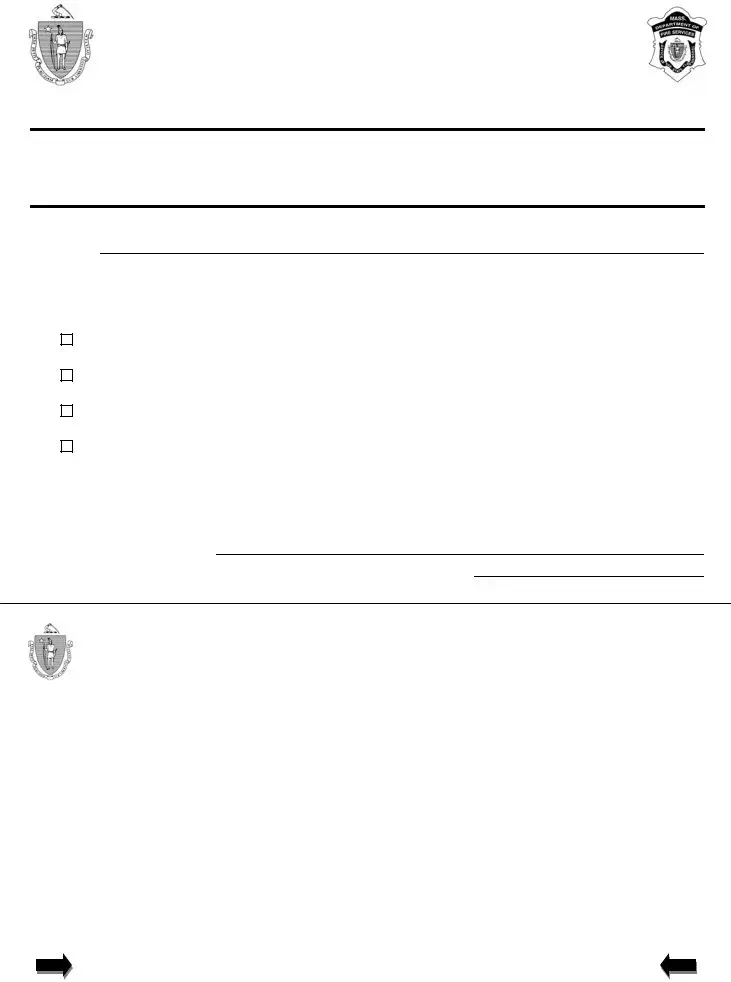What is the FP-300 form used for in Massachusetts?
The FP-300 form is an application used in Massachusetts for obtaining a permit to process hazardous materials. This permit is required for facilities that conduct hazardous material processes as defined by specific capacity categories or hazardous occupancy classifications. It ensures that the processing of hazardous materials complies with the regulations set forth by the Department of Fire Services and other applicable state laws and codes.
Who needs to fill out the FP-300 form?
This form needs to be completed by businesses or responsible parties that manage facilities processing hazardous materials in Massachusetts, especially when the processing falls under the specified capacity categories or requires a H Occupancy classification. The responsible official of the company should fill out and sign the form, attesting compliance with the state's hazardous material processing regulations.
What are the categories mentioned in the FP-300 form?
The FP-300 form outlines four categories based on the capacity of the largest vessel used in the hazardous material process or the classification of the facility:
- Category 2 – largest vessel capacity is more than 2.5 gallons but does not exceed 60 gallons.
- Category 3 – facility is classified as H Occupancy, or largest vessel capacity is more than 60 gallons but does not exceed 300 gallons.
- Category 4 – largest vessel capacity exceeds 300 gallons but does not meet the criteria for Category 5.
- Category 5 – amount of hazardous material in the process exceeds the threshold quantities outlined in federal regulations.
Where can I obtain the FP-300 form?
The FP-300 form can be obtained from the Massachusetts Department of Fire Services website or by contacting them directly. They provide both the application forms and detailed instructions on how to properly complete and submit them.
What information is required on the FP-300 form?
Applicants must provide detailed company information including the company name, street address, and contact details of the responsible official. They must also identify the applicable hazardous material process category/categories and certify that the facility complies with the state's regulations on processing hazardous materials. Additionally, the responsible party must sign the form, declaring all information as true under the penalty of perjury.
How do I submit the FP-300 form?
Submission instructions for the FP-300 form are typically provided by the Department of Fire Services or the local fire department. Generally, the completed form must be submitted to the local fire department for the jurisdiction where the facility is located, along with any required fees and additional documentation that may be requested for the permitting process.
Is there a fee associated with the FP-300 permit?
Yes, there is usually a fee required to process the FP-300 permit. The amount can vary depending on the local jurisdiction and the category of hazardous material processing. Applicants should check with their local fire department for specific fee amounts and payment procedures.
When is the FP-300 permit renewal required?
The FP-300 permit has an expiration date and must be renewed periodically. The exact term of validity depends on the regulations of the issuing authority, usually the local fire department. Permit holders should verify the expiration date on their permit and ensure they apply for renewal before it expires to avoid any disruptions in their operations.
What happens if information on my FP-300 form changes?
If any information provided on your FP-300 form changes, such as contact details, company name, or the scope of hazardous material processing, you are typically required to notify the issuing authority promptly. Depending on the nature of the changes, you may need to submit a new application or an amendment to your existing permit.
